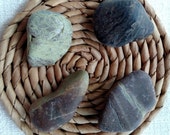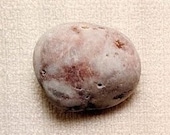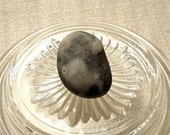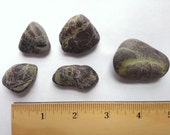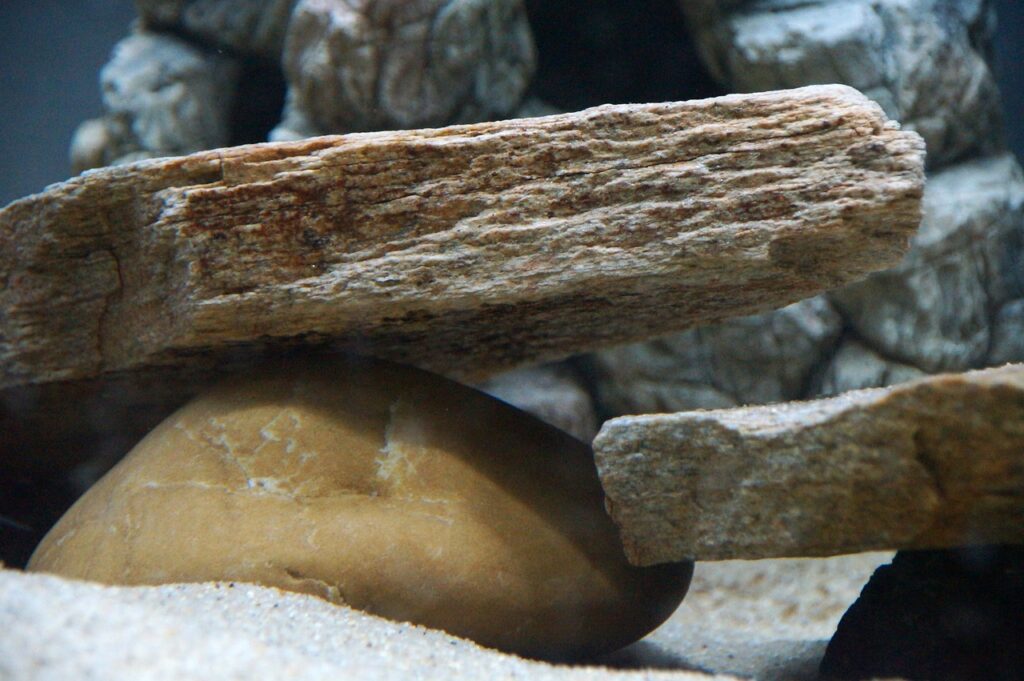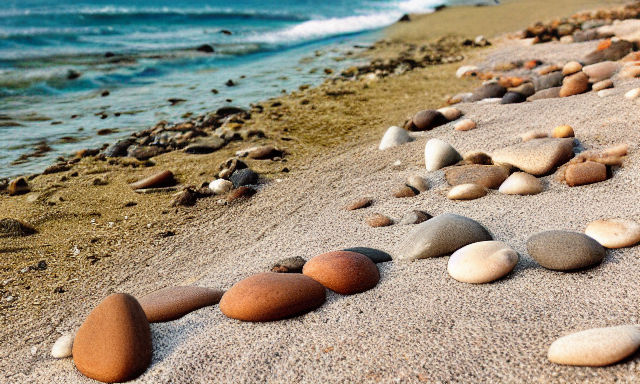Geological Diversity of Northeastern Coastal Regions
The coastal regions of the Northeastern United States boast a rich tapestry of geological formations. Among the various rock types, one stands out for its unique presence on the beaches – sandstone. In this article, we will delve into the intriguing world of sandstone beach stones, exploring their formation, characteristics, uses, and much more. Whether you’re a beachcomber, a geology enthusiast, or just curious about these beautiful stones, this article will uncover the mysteries of sandstone on the Northeastern shores.

The Formation of Sandstone Beach Stones
Unraveling the Geologic Processes Behind Sandstone Formation
Sandstone beach stones are products of intricate geological processes that have unfolded over millennia. To truly appreciate these stones, we’ll explore how sandstone forms, the specific conditions that lead to their creation, and the diverse types of sandstone you might encounter on Northeastern beaches.
Sandstone is a sedimentary rock, a category of rocks that originates from the accumulation and compaction of mineral and organic particles over millions of years. These particles, including sand-sized grains of minerals, are transported by wind, water, or ice and eventually settle in layers. In the Northeastern coastal regions, sandstone is notably formed by the natural compression of beach sands, commonly enriched with quartz.
Beach sands, composed mainly of quartz and feldspar, are subject to intense pressures and the infusion of natural cements over geological time. This process binds the sand grains together, resulting in the solid and often strikingly patterned formations of sandstone beach stones. The striking colors and unique patterns you see in these stones are a testament to the diverse mineral compositions and conditions under which they form.
The vast geological diversity of the Northeastern coastal regions has played a crucial role in shaping the variations of sandstone. Whether you find soft, finely grained sandstone suitable for carving or harder, coarser-grained varieties ideal for construction purposes, each has its unique story within the geological history of the area. Sandstone, with its warm hues and sometimes intricate designs, has captivated geologists, artists, and beachcombers alike.
The Geological Significance of Sandstone
Why Sandstone Thrives on Northeastern Shores
This section will delve into why sandstone is prevalent in the coastal areas of the Northeast. It’s crucial to understand the geological factors that have shaped these coastlines, leading to the abundance of sandstone. Additionally, we will compare sandstone with other rock types that you might come across in these regions, providing insight into its distinctive features.
The Northeastern coastal regions are geological wonders, and their diverse landscapes are sculpted by time, weather, and the ceaseless lapping of waves against the shores. One of the most prominent geological features of these regions is the presence of sandstone formations along the coastline.
Sandstone thrives in this environment due to the complex interplay of geological events. Eons ago, this land was submerged beneath ancient seas, and layers of sediments, rich in quartz and feldspar grains, settled beneath the waters. Over countless years, these layers compressed and solidified into the sandstone we see today. The striking variations in sandstone colors, patterns, and grain sizes across the Northeastern coast are a testament to the unique geological events that have unfolded.
Comparing sandstone with other rock types found in this region is a fascinating exercise. While sandstone represents sedimentary rock formed from the accumulation of sand-sized particles, the Northeast is also known for its granite outcrops, metamorphic rocks like schist, and even igneous formations. Each of these rocks tells a piece of the geological history of this area. Sandstone, with its origins in ancient seas and the changing tides of time, has a distinct character that makes it a true gem of the Northeastern shores.
The geological significance of sandstone in this region is a testament to the dynamic processes that have shaped the landscape over eons. As you stroll along the coastal beaches, appreciating the weathered beauty of sandstone beach stones, remember that these stones hold within them the ancient tales of shifting continents, rising seas, and the patient hand of time.
Continue to explore the world of sandstone beach stones as we delve into their potential applications and how to utilize their unique features to add a touch of natural beauty to your life.
Coastal Beach Stones
Utilizing Sandstone Beach Stones
Discovering the Versatile Applications of Sandstone
Sandstone beach stones, apart from their aesthetic appeal, hold a myriad of practical applications. In this section, we’ll explore the versatile uses of sandstone beyond the beach, discuss the possibility of polishing these stones, examine their ability to be sealed, and investigate their interaction with water. Whether you’re looking for creative projects or functional purposes, sandstone has much to offer.
Potential Uses of Sandstone Beach Stones
Sandstone beach stones, with their natural beauty and unique patterns, have long been sought after for various applications. The versatility of these stones makes them valuable for both artistic projects and functional purposes.
Artistic Projects: Sandstone beach stones are popular choices for artists and artisans. Their natural colors and patterns can be utilized for sculptures, mosaics, and even as canvases for painting. The smooth surface of these stones provides an excellent backdrop for creative endeavors. Whether you’re a professional artist or just looking for a fun craft project, sandstone beach stones can be your canvas for expression.
Landscaping and Decor: Sandstone beach stones make beautiful additions to your garden or outdoor space. They can be used for pathways, garden borders, and even as decorative elements in water features. Their natural aesthetics add a touch of tranquility to any landscape.
Paperweights and Decorations: Sandstone beach stones are naturally heavy, making them ideal for paperweights. They are also excellent as decorative pieces for your desk, shelves, or home. The unique patterns and colors of sandstone can be an eye-catching addition to your interior décor.
Jewelry Making: If you have a flair for jewelry making, consider using sandstone beach stones. They can be polished, shaped, and drilled to create unique and one-of-a-kind pieces. The warm hues of sandstone can add a touch of natural elegance to your jewelry creations.
Construction and Building Projects: Sandstone’s durability and ease of carving make it suitable for construction projects. Historically, it has been used as a building material, and in contemporary times, it’s still employed for architectural purposes, such as cladding and veneers.
Can Sandstone Be Polished?
Polishing sandstone beach stones can enhance their appearance and provide a smoother texture. The extent to which sandstone can be polished depends on various factors, including its composition and the tools used. Sandstone is a relatively soft sedimentary rock, typically composed of quartz and feldspar grains, cemented together by minerals like silica, calcium carbonate, or iron oxide. While it’s softer than many other stones, it can still be polished to achieve a beautiful shine.
To polish sandstone beach stones, you will need specific tools and abrasives designed for use on softer rocks. The process involves progressively finer grits of abrasives to smooth the surface and bring out the stone’s natural luster. The final step often involves a polishing compound that further enhances the shine.
Polished sandstone beach stones can be used in decorative projects or even as a part of jewelry making, adding a touch of elegance to your creations. Keep in mind that the degree of polish depends on your preference, from a matte sheen to a high-gloss finish.
Can Sandstone Be Sealed?
Sealing sandstone is a common practice, especially when it’s used for practical purposes like landscaping or construction. Sealing serves several purposes, including:
Protection: Sealing the surface of sandstone helps protect it from the elements. It can repel moisture, preventing water from penetrating the stone, which can lead to erosion or staining.
Enhanced Appearance: Sealing can bring out the natural colors of the sandstone, making it appear more vibrant and appealing. It can also add a subtle sheen to the stone’s surface.
Durability: A sealed sandstone surface is often more durable and less prone to wear and tear. It can extend the lifespan of the stone, particularly in high-traffic areas.
Reduced Maintenance: Sealed sandstone is typically easier to clean and maintain. Stains are less likely to penetrate the sealed surface, and cleaning can often be as simple as wiping the stone with a damp cloth.
Whether or not to seal your sandstone beach stones depends on their intended use. If you’re incorporating them into outdoor projects or using them in high-traffic areas, sealing can be a beneficial step to ensure their longevity and maintain their beauty. The type of sealant you use should be suitable for sandstone, and it’s essential to follow the manufacturer’s instructions for application.
Can Sandstone Go in Water?
Sandstone’s interaction with water is a crucial consideration, particularly if you’re using it in outdoor landscaping, water features, or areas prone to moisture exposure. Sandstone can withstand exposure to water, but some precautions are necessary to ensure its durability and maintain its appearance.
Sealed Sandstone: As mentioned earlier, sealing sandstone can help protect it from moisture. Sealed sandstone is more resistant to water penetration, making it suitable for use in outdoor spaces with water features.
Porous Nature of Sandstone: It’s important to note that, like all sedimentary rocks, sandstone is porous. Unsealed sandstone can absorb water, which may lead to erosion or staining over time. If exposed to freeze-thaw cycles, water absorption can result in the stone’s deterioration.
Proper Installation: When using sandstone in water features, it’s essential to ensure proper installation and drainage. The stone should be laid on a solid, well-draining base to prevent water from accumulating underneath it.
Regular Maintenance: Sandstone in water features may require periodic maintenance, including cleaning and resealing, to maintain its appearance and integrity.
Overall, sandstone can be used in water features and other areas with moisture exposure, but attention to proper sealing and maintenance is crucial to ensure its longevity.
Sandstone’s Buoyancy
The buoyancy of sandstone beach stones is an interesting characteristic to explore, particularly for those who enjoy beachcombing or stone collecting. Whether sandstone stones float or sink depends on their specific composition and porosity.
Sandstone is generally less dense than many other rocks and minerals, which makes it more likely to float. However, there are variables that can influence the buoyancy of sandstone beach stones. If the sandstone is highly porous and has absorbed water, it will be denser and more likely to sink. Unweathered or unaltered sandstone is more likely to float due to its lower density.
As you explore Northeastern beaches, you might find sandstone beach stones exhibiting varying buoyancy, often influenced by their unique compositions and the length of time they have been exposed to the elements. This adds another layer of intrigue to the world of sandstone beach stone collection.
Conservation and Discovery
Preserving the Beauty of Sandstone Beach Stones
Sandstone beach stones possess an innate charm that beckons collectors and enthusiasts. In this section, we’ll discuss the importance of proper storage to conserve the aesthetic appeal of sandstone beach stones. We’ll also identify the regions where sandstone can be found in the Northeast and explore popular beachcombing spots where these captivating stones can be discovered. Additionally, we’ll delve into assessing the value of sandstone beach stones, shedding light on their significance in the world of stone collecting.
Proper Storage of Sandstone Stones
Proper storage is essential to maintain the pristine beauty of sandstone beach stones. These stones are often collected for their unique colors, patterns, and textures, so protecting these qualities is paramount.
- Dry Storage: Sandstone should be stored in a dry area. Excessive moisture can lead to the growth of mold and the deterioration of the stone’s appearance.
- Avoid Direct Sunlight: Prolonged exposure to direct sunlight can cause the colors of sandstone to fade. Store your stones in a place where they won’t be exposed to harsh UV rays.
- Individual Wrapping: To prevent contact and potential scratching between stones, it’s wise to wrap each stone individually. This can be done using soft cloth, bubble wrap, or tissue paper.
- Display Containers: If you wish to showcase your sandstone collection, consider glass display containers. These containers offer protection from dust and humidity while allowing you to admire your stones.
- Avoid Extreme Temperatures: Extreme temperatures can affect the integrity of sandstone. Avoid storing your stones in places with fluctuating temperatures, as this can lead to cracking.
Regional Presence of Sandstone in the Northeast
Sandstone is a sedimentary rock that can be found in various parts of the Northeastern United States. Its presence in the region contributes to the diversity of beach stones you may come across along the coastline. Here are some regions in the Northeast where you can find sandstone formations:
- Connecticut: Sandstone formations can be found in various parts of Connecticut, particularly in areas with exposure to the coast.
- New York: In the Hudson Valley region of New York, sandstone can be observed, adding to the geological diversity of the state.
- New Jersey: The Kittatinny Ridge in New Jersey is known for its sandstone formations, which are visible in parts of the Appalachian Trail.
- Pennsylvania: The state of Pennsylvania hosts sandstone formations, especially in the eastern and central regions.
Where to Find Sandstone Stones in Nature
Beachcombing in the Northeast can be a rewarding experience. While sandstone beach stones can be found in various coastal regions, there are some popular spots where you’re more likely to encounter these captivating stones. Some of these locations include:
- Narragansett Bay, Rhode Island: The shores of Narragansett Bay often yield an assortment of beach stones, including sandstone, due to the geological formations in the region.
- Cape Cod, Massachusetts: The picturesque beaches of Cape Cod are known for their diverse array of beach stones. Sandstone can be found amidst the pebbles and cobbles along the shoreline.
- Long Island, New York: Beaches on Long Island provide ample opportunities for beachcombing, with the chance to discover sandstone beach stones.
- Delaware Bay, Delaware: The shores of Delaware Bay are home to various types of beach stones, and sandstone can frequently be spotted.
- Lake Champlain, Vermont: The stony beaches along Lake Champlain in Vermont occasionally yield sandstone beach stones along with a mix of other geological treasures.
Coastal Beach Stones
Assessing the Value of Sandstone Beach Stones
The value of sandstone beach stones can vary, often depending on factors such as size, uniqueness, and the appeal of the stone. Collectors, artists, and enthusiasts alike may find various ways to assign value to these stones:
- Aesthetic Appeal: Some sandstone beach stones possess remarkable colors and patterns that make them stand out. Highly unique or aesthetically pleasing stones are often more valuable to collectors.
- Size: Larger sandstone stones may have greater value, especially if they exhibit distinct features or patterns.
- Uniqueness: Rare or distinct sandstone formations can hold special value for collectors.
- Potential for Use: Sandstone stones that are suitable for artistic projects, such as sculptures or mosaics, may be more valuable to those in the arts.
- Local Significance: In some cases, the local significance of a sandstone stone can add to its value. Stones from specific beaches or regions may be highly sought after.
- Collector’s Interest: Sandstone beach stone collecting is a passion for many individuals. Stones that fit into a collector’s unique set of interests can be especially valuable within this community.
In the world of stone collecting, value can be subjective, often influenced by the eye of the beholder. For some, the mere joy of finding and appreciating these stones is the ultimate reward.
As we conclude this article, we’ve journeyed through the captivating world of sandstone beach stones, from their formation and unique features to their buoyancy, storage, and regional significance. Collectors and beachcombers alike find wonder in these stones, each with its own geological story etched in its patterns and colors. Whether you’re a seasoned collector or a novice explorer, the Northeastern coastline holds a treasure trove of these natural marvels, waiting to be discovered and appreciated. So, the next time you visit a beach in the Northeast, take a closer look at the stones beneath your feet – you might just uncover the quiet beauty of sandstone beach stones, a testament to the fascinating geological history of the region.

